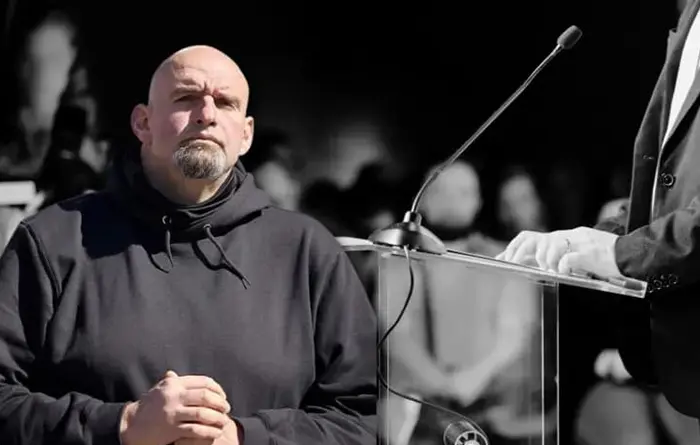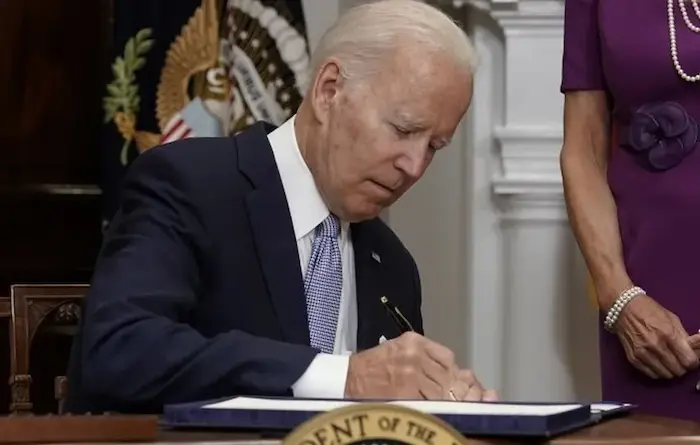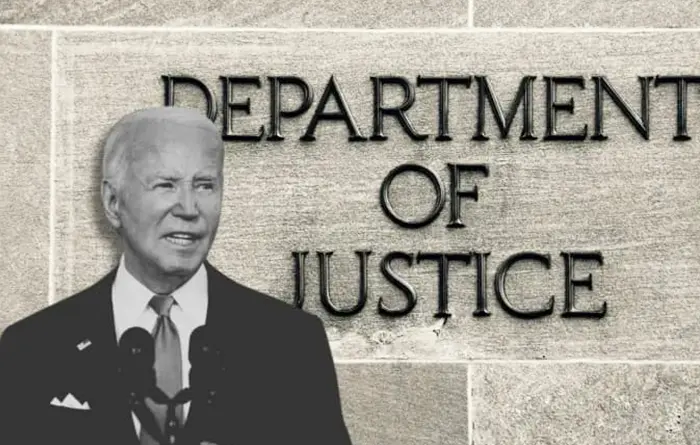By Alexander Raikin
It’s the courts, stupid. At President Joe Biden’s televised farewell speech last week, he announced that he is suspending his re-election campaign because he needs to focus all his remaining energy on rescuing our republic from the judges sworn to uphold it.
“Those of us who cherry”—not a typo—”that cause, cherish it so much, American democracy itself. We must unite to protect it,” Biden said in his pre-scripted speech. “Nothing can come in the way of saving our democracy.”1 Not even the courts.
Biden said that he is taking this issue so seriously, that he has no choice but in the last months of his presidency to reform the courts whose justices former President Donald Trump nominated, and the Congress ratified. Vice-President Kamala Harris, the presumed Democratic frontrunner, is taking Biden’s pledge as a centerpiece of her election campaign.
Now we know the details of their plan. In this week’s op-ed in the Washington Post, Biden has made it clear that it includes setting term limits for Supreme Court justices, adding an enforceable code of conduct (on top of the already existing code of conduct set by the Supreme Court in 2023), and an explicit constitutional amendment to remove all presidential immunity—especially for Trump.
If it appears to be a blatant power grab, that is because not all looks are deceiving. The arbitrary term limit of 18 years—and not a year sooner—is the minimum number of years to ensure that only three conservative justices, all appointed by Republican presidents, would need to resign and to be replaced this year: Justices Thomas, Roberts, and Alito.
In other words, the Biden-Harris plan for judicial reform would at once shift the 6-3 conservative majority on the Supreme Court to a liberal majority instead. Even if Biden keeps his promise to only appoint one justice every two years, the Supreme Court would be at least a 4-3 liberal majority within a year, if Democrats win this November. Curiously, despite the apparent threat posed by the Supreme Court justices appointed by Trump, none of them would be on the chopping block for another decade.
It is another example of the 2024 “split screen” election, the latest favorite talking point for Democrats. Both Nancy Pelosi and Vice President Kamala Harris recently used it to explain the difference between Trump and Biden—and now Harris.
At one end, we have the President and Vice-President of the United States decrying the Supreme Court of an “extreme” agenda. Both accused the Supreme Court of partisan politics and the federal justices appointed by Trump of covering up his crimes as someone above the “rule of law”.
Then there is reality.
Any objective analysis of the data behind Trump’s appointment of justices shows that Donald Trump is not a threat to democracy. On the contrary, the federal judiciary after Trump is in many ways the most effective branch of government.
At the top of the judiciary, the Supreme Court has been exceedingly normal. On average, over the last four years of decisions since Trump appointed Justice Amy Coney Barrett in 2020, 40.5% of all decisions have been unanimous—in line with the previous decade of decisions before Trump.
Some of these unanimous decisions impacted Trump personally. In Trump v. Anderson, on the question of whether Trump can be kicked off the ballot in Colorado, all the justices of the Supreme Court ruled to overturn the Colorado Supreme Court and to prevent Trump from being removed on the ballot.6 Are the liberal justices somehow also “extreme”?
Even when the Supreme Court was split in its decisions, it was more likely than not to split along non-ideological lines. During this year’s term, a liberal Supreme Court Justice was likely to be in a majority 56% of the time; last year, it was over 90%.
The evidence is clearer still when looking at the judiciary as a whole.
The number of judges appointed by Trump differ based on the source and criteria. Pew states 226 judges; Heritage 203; Wikipedia 234 ; Brookings 223; Ballotpedia lists 245. The total number of all judges appointed during Trump’s presidency—including territorial courts and more specialized courts—is 245.
If Trump was a dictator during his presidency, and left along poisoned justices, he was especially poor at it. The Senate, in keeping with its constitutional obligations, hardly rubberstamped Trump’s judicial picks. Trump nominated an additional 151 federal justices that were never approved by the Senate.
During deliberations, the Congress at no point raised serious concerns of the overall illegitimacy of Trump’s judicial nominations. After all, Senators voted for it. Of those votes carried by roll call, the vote in the Senate was on average 68 votes for the confirmation of a Trump-nominated judge—a bipartisan vote well above the minimum number of votes required to pass a filibuster (on average, there were only 27 votes in opposition). Small surprise that nearly 96% of Trump’s judicial picks were rated by the American Bar Association as either “well qualified” or “qualified”.
In practice, the judges appointed by Trump behaved independently. The facts speak for themselves. Of the 72 lawsuits filed to overturn the 2020 election results because of alleged fraud, not a single Trump-appointed judge ruled in favor of overturning the presidential election—on the contrary, exactly 35 times a court with at least one Trump-appointed judge either ruled against the motion or declined to hear the case.
The same applies with the criminal and civil lawsuits filed personally against Trump. While prosecutors have largely refrained from launching these suits with Trump-appointed justices, the Supreme Court’s split decision on the limits of presidential immunity, Trump v. United States, largely equivocated on the accusations against Trump—the president, the majority ruled, sometimes has immunity and sometimes doesn’t. Democracy, apparently to its critics, dies by stating the obvious.
The only exception is with the Mar-a-Lago classified documents case, where Justice Aileen Cannon dismissed claims that Trump violated the Espionage Act on the grounds that the appointment of the special counsel to investigate Trump was itself unconstitutional.
Justice is not a matter of only finding guilty verdicts. Yet Cannon’s decision is currently on appeal in the 11th Circuit Court of Appeals, which twice (with Trump-appointed judges) overruled Cannon on decisions during that case. It is hardly a sign that American institutions are broken if no one is above or below the law—and if the judiciary takes the proper course to deliberate carefully and scrutinize fairly.
It is how our constitutional system was designed. The judiciary, Alexander Hamilton wrote in Federalist no. 78, “is beyond comparison the weakest of the three departments of power”. It holds its ability to protect the Constitution from the other branches only because of a “permanent tenure of judicial offices,” essential for justices to have “independent spirits” and to serve “as the bulwarks of a limited Constitution against legislative encroachments.”
For Hamilton, only independent justices, safe from political pressure by a lifetime appointment, can protect our fundamental rights. It has been the standard practice since the appointment of the first Chief Justice in 1789.
The real threat to democracy is not from Trump’s judicial picks or Trump himself. It is, as Hamilton warned, the “arts of designing men” who “have a tendency… to occasion dangerous innovations in the governments.” Biden and Harris would be wise to listen.
Note: the opinions expressed herein are those of Alexander Raikin only and not Breaking Battlegrounds’ staff. Alexander Raikin is a friend of the show. He is a Visiting Fellow in Bioethics and American Democracy Program at the Ethics and Public Policy Center. His research focuses on the dignity of human life and end-of-life issues, especially on its impact on the field of medicine and broader ethical questions of social belonging.You can follow him on X @AlexanderRaikin.
























